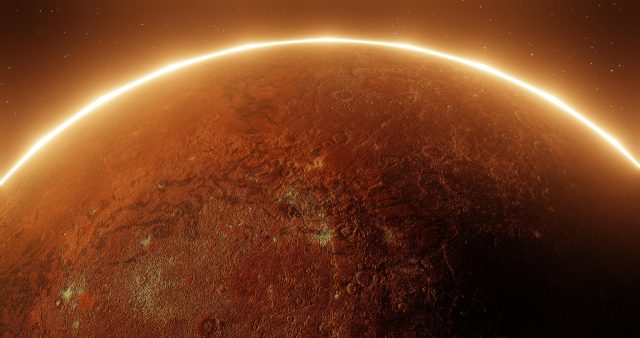Welcome to the second episode of “Edge of Knowledge,” our science explainer series starring astrophysicist Paul Sutter. In part one, Paul took us on a journey to the edges of our galaxy and talked about dark matter, the strange stuff that appears to make up the majority of the Milky Way’s total mass—even though we can’t observe it or interact with it in any meaningful way. It’s odd, it’s counterintuitive, and yet it’s real. Dark matter is one of the current great unknowns of modern astrophysics.
This time, we’re focusing our science vision somewhat closer to home. A lot closer to home, in fact: we’re taking a look at our planetary next door neighbor, Mars.

Bhavik Jagani / EyeEm / Getty Images
Mars has been a staple in science fiction for almost as long as science fiction has been a thing. The red planet has played home to H. G. Wells’ jealous invading horde. It’s been the setting for Edgar Rice Burroughs’ Barsoom novels, featuring swashbuckling and scantily clad Boris Vallejo-esque Martian princesses. Kim Stanley Robinson’s Martian trilogy explored a fictionalized but science-based approach to actually living there. Andy Weir’s Mark Watney was marooned there for years, living on potatoes and pure determination. Even Ars’ favorite TV show, The Expanse, is built around a future in which humanity lives successfully (more or less) on Mars.
But what about actually living there? Not in a science fiction story—however realistic some of them are—but for real?
I want to go to there
Living on Mars presents a complex interlinked set of challenges, each of which would be difficult to solve on its own. And each challenge sort of compounds the others’ difficulty when you stack them together—and so, to break this all down, we’ve turned to expert explainer and science guy Paul Sutter. Paul takes us through the specifics of actually making it from Earth to Mars and the things we’d need to bring with us to make the trip both successful and actually worthwhile.
Paul is also joined in this episode by Ars space-meister Eric Berger, who pops up about halfway through and answers some questions about how well—or not—the current state of the art in space exploration technology is suited to actually setting up human habitation on Mars (spoiler alert: we’ve got a long way to go).
We hope you enjoy this episode—there are another half-dozen in the production pipeline on topics that range from climate change to black holes to dark energy. Stay tuned!









